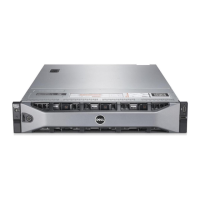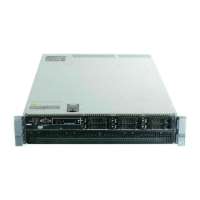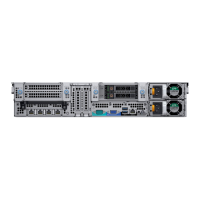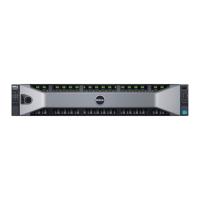1. From the System Setup Main Menu, click Boot Settings, and select Boot Mode.
2. Select the UEFI boot mode you want the system to boot into.
CAUTION: Switching the boot mode may prevent the system from booting if the operating system is not
installed in the same boot mode.
3. After the system boots in the specified boot mode, proceed to install your operating system from that mode.
NOTE: Operating systems must be UEFI-compatible to be installed from the UEFI boot mode. DOS and 32-bit operating
systems do not support UEFI and can only be installed from the BIOS boot mode.
NOTE: For the latest information about supported operating systems, go to www.dell.com/ossupport.
Changing boot order
About this task
You may have to change the boot order if you want to boot from a USB key or an optical drive. The following instructions may
vary if you have selected BIOS for Boot Mode.
NOTE: Changing the drive boot sequence is only supported in BIOS boot mode.
Steps
1. On the System Setup Main Menu screen, click System BIOS > Boot Settings > UEFI Boot Settings > UEFI Boot
Sequence.
2. Use the arrow keys to select a boot device, and use the plus (+) and minus (-) sign keys to move the device down or up in
the order.
3. Click Exit, and then click Yes to save the settings on exit.
NOTE: You can also enable or disable boot order devices as needed.
Network Settings
To view the Network Settings screen, power on the system, press F2, and click System Setup Main Menu > System BIOS
> Network Settings.
NOTE: Network Settings are not supported in BIOS boot mode.
Table 48. Network Settings details
Option Description
UEFI PXE Settings Enables you to control the configuration of the UEFI PXE device.
Number of PXE Devices This field specifies the number of PXE devices. This option is set to 4 by
default.
PXE Device n (n = 1 to 4) Enables or disables the device. When enabled, a UEFI PXE boot option is
created for the device.
PXE Device n Settings(n = 1 to 4) Enables you to control the configuration of the PXE device.
UEFI HTTP Settings Enables you to control the configuration of the UEFI HTTP device.
HTTP Device n (n = 1 to 4) Enables or disables the device. When enabled, a UEFI HTTP boot option is
created for the device.
HTTP Device n Settings (n = 1 to 4) Enables you to control the configuration of the HTTP device.
UEFI ISCSI Settings Enables you to control the configuration of the ISCSI device.
ISCSI Initiator Name Specifies the name of the ISCSI initiator in IQN format.
ISCSI Device1 Enables or disables the ISCSI device. When enabled, there is an ISCSI
device shown in the Boot Menu. This is set to Disabled by default.
ISCSI Device1 Settings Enables you to control the configuration of the ISCSI device.
Pre-operating system management applications 51

